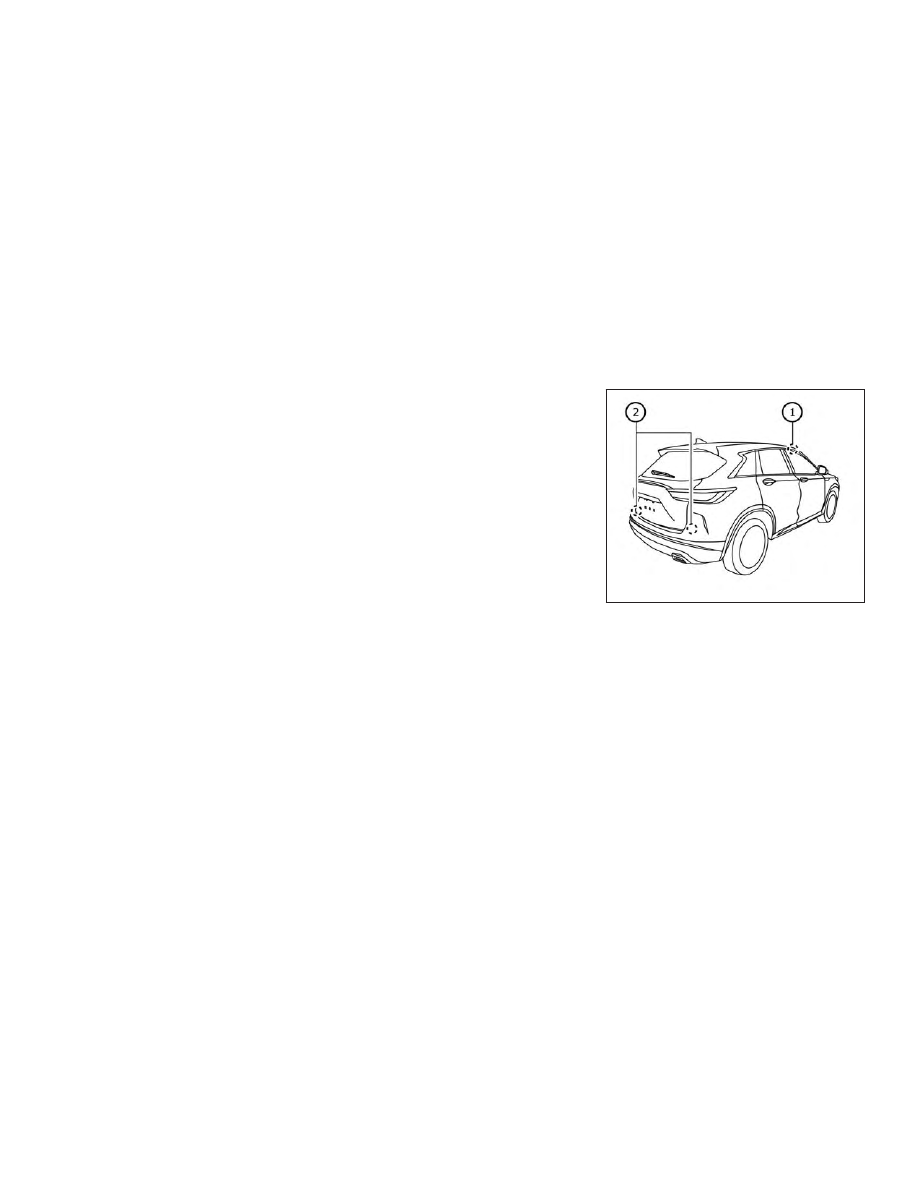Infiniti QX50 (2019 year). Instruction - part 20

– When steering quickly.
– When the ICC, DCA, PFCW or FEB
with Pedestrian Detection warnings
sound.
– When the hazard warning flashers
are operated.
– When driving on a curve at a high
speed.
SYSTEM TEMPORARILY
UNAVAILABLE
When any of the following messages appear
on the vehicle information display, a chime
will sound and the BSI system will be turned
off automatically.
∙ “Not Available Poor Road Conditions”:
When the VDC system (except traction
control system function) or ABS oper-
ates.
∙ “Currently Not Available”:
When the VDC system is turned off.
∙ “Not Available: High Camera Temp”:
When the camera detects that the inte-
rior temperature is high (over approxi-
mately 104°F [40°C]).
∙ “Unavailable: Side Radar Obstruction”:
When side radar blockage is detected.
Turn off the BSI system and turn it on again
when the above conditions no longer exist.
SYSTEM MALFUNCTION
When the BSI system malfunctions, it will be
turned off automatically, a chime will sound
and the BSI system warning light (orange) will
illuminate.
Action to take:
Stop the vehicle in a safe location, place the
vehicle in the P (Park) position, turn the en-
gine off and restart the engine. If the warning
light (orange) continues to illuminate, have
the system checked. It is recommended that
you visit an INFINITI retailer for this service.
SYSTEM MAINTENANCE
The lane camera unit
䊊
1
for the BSI system is
located above the inside mirror. The two ra-
dar sensors
䊊
2
for the BSI system are located
near the rear bumper. To keep the proper
operation of the BSI system and prevent a
system malfunction, be sure to observe the
following:
∙ Always keep the windshield and the area
near the radar sensors clean.
LSD2924
5-64
Starting and driving